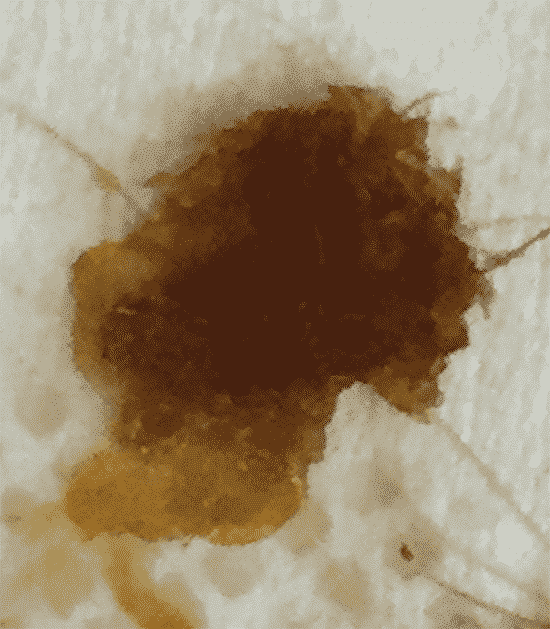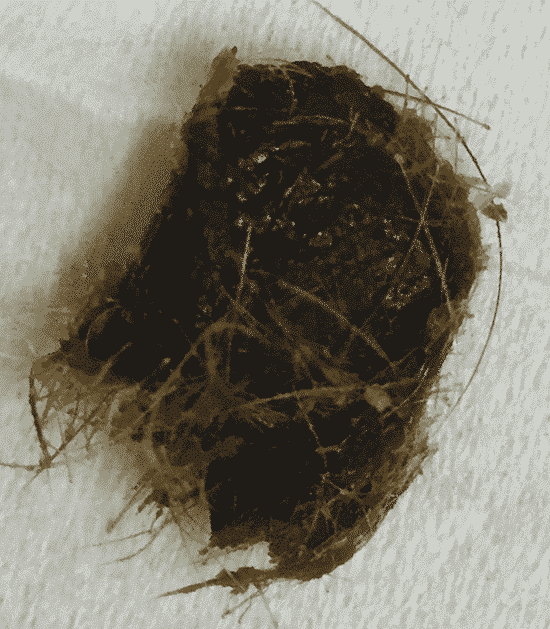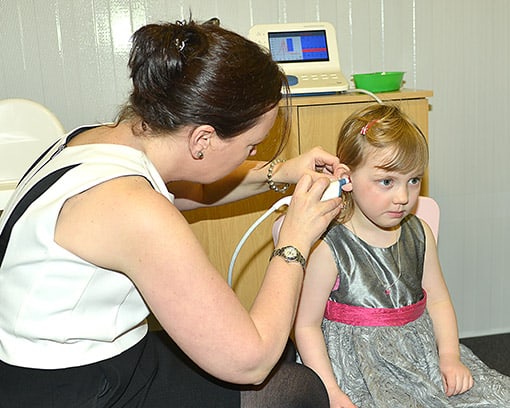Ear Wax & Blocked Ears
The bodily process of producing ear wax is completely natural. For many people ear wax goes unnoticed and does not cause any complications. However, it is estimated that between 1.3 to 3.9 million people in the UK alone experience impacted ear wax build up, also known as ‘cerumenosis‘. Impacted ear wax build up can lead to many symptoms such as a ‘blocked ear’. Although a blocked ear can be as a result of a number of different ear and health-related problems, it is a common ear wax symptom and a frequent reason why people have their ears cleaned and cleared.
‘Blocked ear’ due to impacted ear wax build up
What is ear wax?
‘Cerumen’ as it is medically known, is a natural substance produced by the ear canal of humans and many other mammals.
It is yellow or brown in appearance and secreted by specially evolved ‘cerumenous’ and ‘sebaceous’ glands found on the skin lining the cartilaginous portion of the ear canal, which forms the outer third of the ear canal. The inner two thirds of the ear canal is made up of bone.
Ear wax can be described as being either being ‘wet’ or ‘dry’. The type of wax you have is usually genetically inherited and determined by the varying amounts of the many different organic compounds that make up wax. These include: dead skin (keratin), cholesterol, squalene, alcohols and long chains of unsaturated and saturated fatty acids. Other factors such as diet, age, race and environment can all also influence the type of wax you have. For example, dry wax is more prevalent in older people whilst wet wax is more common in African and European people.

‘Wet’ type human ear wax

‘Dry’ type human ear wax
Although the exact function of wax is not yet fully understood, it is believed to play a role in the cleanliness, hygiene and overall health of the ear:
CLEANING– The layer of skin lining the ear canal and eardrum has the unique property of moving sideways out towards the entrance of the ear canal in a ‘conveyor belt’ motion as it sheds itself. Subsequently, wax migrates out of the ear alongside the shedding layer of skin expelling with it any dirt, dust and foreign bodies it has trapped and captured along the way. It is similar to how our finger nails, made of keratin, grow outwards and away from our fingers taking with it any dirt that has embedded underneath.
LUBRICATION – The oily and greasy properties of wax may help lubricate the ear canal to assist in the ‘conveyor belt’ motion of the shedding layer of skin lining it. In addition, it may help protect the ear canal preventing it from cracking, itching and becoming too dry and flaky.
ANTIBACTERIAL – Ear wax is slightly acidic and this may reduce the likelihood of developing an ear infection. However, this possible ‘anti-infection’ role of wax is not believed to be very strong at all.
Causes of ear wax build up
The amount of wax secreted can significantly vary between individuals. In addition, one ear can produce more wax than the other ear in the same individual. Nonetheless, it usually migrates out of the ear naturally and does not cause any problems. However, in some people this does not occur and can build up and become impacted inside the ear canal. This can be due to the following reasons:
- The skin lining the ear canal no longer migrates outwards when it sheds. The stopping of this ‘conveyor belt’ motion of the skin means the wax becomes trapped inside the ear.
- The anatomy of the ear canal does not lend well to the migration of wax. This may be due to a sharp 1st and/or 2nd bend of the ear canal, a genetically inherited narrow ear canal (e.g. Down Syndrome), a narrow ear canal due to chronic ear infections (stenosis), or bony protrusions that are present inside the ear (exostosis).
- The inappropriate use of cotton buds, or regular wearing of hearing aids, earbuds and earplugs can push and impact the wax deep in the ear canal.
- Hair (cilia) inside the ear canal becomes entangled with the wax preventing it from migrating out.
- The glands on the skin lining the ear canal are hyperactive and secrete more wax than is normal.
- The presence of hard and dry wax, which is more common in older people, since it will be more impacted and lodged inside the ear canal.
Ear wax symptoms
If left to build up and become impacted ear wax it can cause many symptoms such as earache and the sensation of a ‘blocked ear’. Other ear wax symptoms include:
- Conductive hearing loss: wax restricts sound waves from travelling efficiently through the ear canal and vibrating against the eardrum.
- Occulsion: internal sounds such as chewing, breathing, heartbeat and your own voice can no longer escape out of the ear and are therefore heard much louder inside your head.
- Tinnitus: a ringing/whistling/buzzing type of sound that originates from inside your ear and only be heard by yourself.
- Vertigo: an increase in air pressure due to the wax inside the ear canal can inadvertently stimulate the organ of balance which is located inside the inner ear.
- Coughing: similarly to vertigo, an increase in air pressure due to the wax inside the ear canal can inadvertently stimulate the facial nerve located inside the middle ear.
- Whistling of hearing aid: sounds being amplified by the hearing aid are reflected back out of the ear due to the wax causing acoustic feedback (e.g. whistling) of the hearing aid.
- Itchiness/irritation: wax that is impacted, especially dry wax, will rub against the side of the ear canal upon any jaw movements.
Ear wax treatments

In 2010 a health technology assessment conducted a review of 26 different previous studies into wax removal to evaluate the safety and effectiveness of the different methods of removal available. The conclusions of the review were:
- Ear drops helps in the treatment of wax although no one particular type of ear drops could be said to be better than another.
- Ear irrigation is more effective if ear drops are used beforehand.
- Ear irrigation performed by an appropriately qualified professional is better than an individual performing it themselves.
- Endoscopic removal of wax is more comfortable, quicker and easier to perform than microscopic removal of wax.
Give Us a call to book your appointment
How to get here?
Click here for a handy guide on how to find us.
Gateway Profesional Business Suites
Room 6
The Reeks Gateway
Rock Road
Killarney, Co. Kerry
Tel : (083)855 2745
MON - FRI 9.00am - 6.00pm
BY APPOINTMENT ONLY
